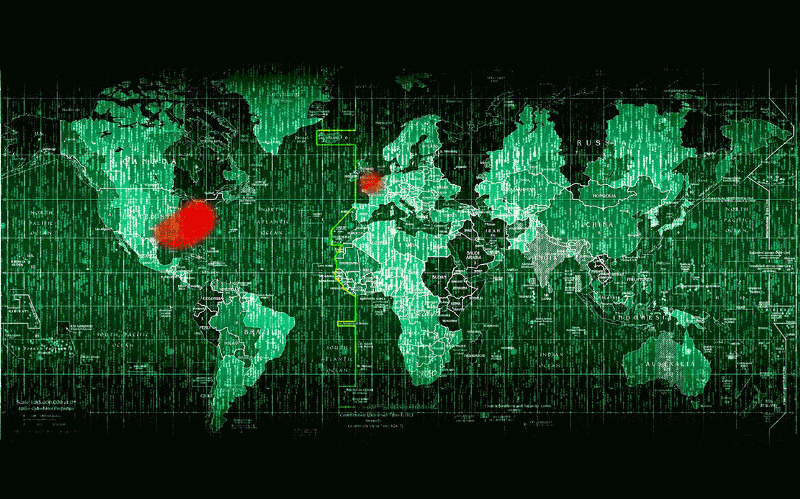10 major cyber attacks in the history of mankind
The Morris worm is one of the first network worms distributed over the Internet. Written by a graduate student at Cornell University Robert Tappan Morris and launched on November 2, 1988 at the Massachusetts Institute of Technology. The damage from the Morris worm was estimated at about $ 96.5 million.

The computer virus “Chernobyl”, also known as “Chih” and CIH, was the first malicious program that was able to damage the hardware of the computer — the Flash BIOS chip. The virus first appeared in June 1998, and since then its epidemic has not stopped.
In March 1999, the Melissa virus became the first malicious code to spread via email. The work of mail servers of several large companies in many countries was disrupted. The mechanism of spreading the virus caused an explosive wave of infected letters. As a result, the load on mail servers increased dramatically and the processing of email messages slowed down significantly-or stopped. The damage from the epidemic was estimated at $ 80 million. Photo experts Fredrik Bjork (left) and Joan Ekstrom, who helped the FBI calculate the author of Melissa.
The Mafiaboy virus, which spread in 2000, is one of the first full-scale DDoS attacks (distributed denial of service) via the Internet servers of large companies. Attacking several well-known sites, including Yahoo, Fifa.com, Amazon, Dell, eBay and CNN, began a Canadian high school student. The damage amounted to approximately $ 1.2 billion.
Cabir — the first mobile virus — a full-fledged computer worm that infected mobile phones in 2004. If the phone was infected with Cabir, then each time the phone was turned on, the message “Caribe” was displayed. The virus was disguised as a program to protect the phone Caribe Security Manager, which as a special file the user had to install themselves. He also tried to infect phones via Bluetooth.
ZeuS — Trojan program, which appeared in 2007, is the first case in the history of malicious software distribution through social networks. Facebook users were sent several photo messages, which were redirected to sites with the ZeuS virus. Then the Trojan program was introduced into the system, intercepted the user’s registration data, which made it possible to steal funds from the accounts of customers of leading European banks. The virus attack affected Spain, Italy, Germany and the Netherlands. Attacks were not only the victim’s personal computer, but also mobile devices.
StuxNet is the first military-use virus and the first really used cyber weapon. He attacked the industrial systems that controlled the production processes in 2010. StuxNet disabled Iran’s nuclear facilities, physically destroying the infrastructure: then up to 20% of Iran’s nuclear centrifuges could suffer (one of the Iranian enterprises in the photo).
The Lazarus virus in 2014 led to a large-scale leak of personal data from Sony Pictures employees, e-mails and unreleased film studio films. The losses of the company were estimated at $ 100 million (of which $ 83 million — due to the loss of the films being prepared for rental). It is believed that the attack on the servers of Sony was carried out by the cyber group Lazarus, associated with the government of North Korea.
Specifically designed for attacks on energy companies, the “Industroyer” virus allegedly caused power failures in Kiev in December 2016. It uses four legitimate communication protocols widely used in power engineering, transport management, water supply, etc. As a consequence, it does not require hackers preliminary search of vulnerabilities in networks.
The famous virus-encryptor WannaCry in May 2017 attacked 200,000 computers in 150 countries around the world. The damage was estimated at $ 1 billion. The virus penetrated computers with a Windows operating system, where no updates were installed, encrypted the contents of hard disks and demanded $ 300 for users to decrypt. In the photo, the British IT expert Marcus Hutchins, who is credited with neutralizing the extortion virus. However, two months later Hutchins was arrested in the US on charges of spreading another malicious program — Kronos. With the help of this virus in 2014–2015. cyber-fraudsters successfully stole bank card data.
Follow us on social media to get the latest updates and company news:
https://www.facebook.com/levelnetwork/
https://www.instagram.com/levelnetwork/
https://twitter.com/LevelNetwork
https://medium.com/@LevelNetwork
https://www.reddit.com/user/LevelNetwork/
https://steemit.com/@levelnet/
https://www.linkedin.com/company/10879121/
https://vk.com/levelnet
https://t.me/levelnet_ico
https://bitcointalk.org/index.php?topic=2212642